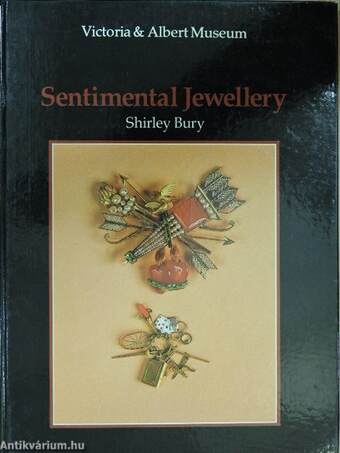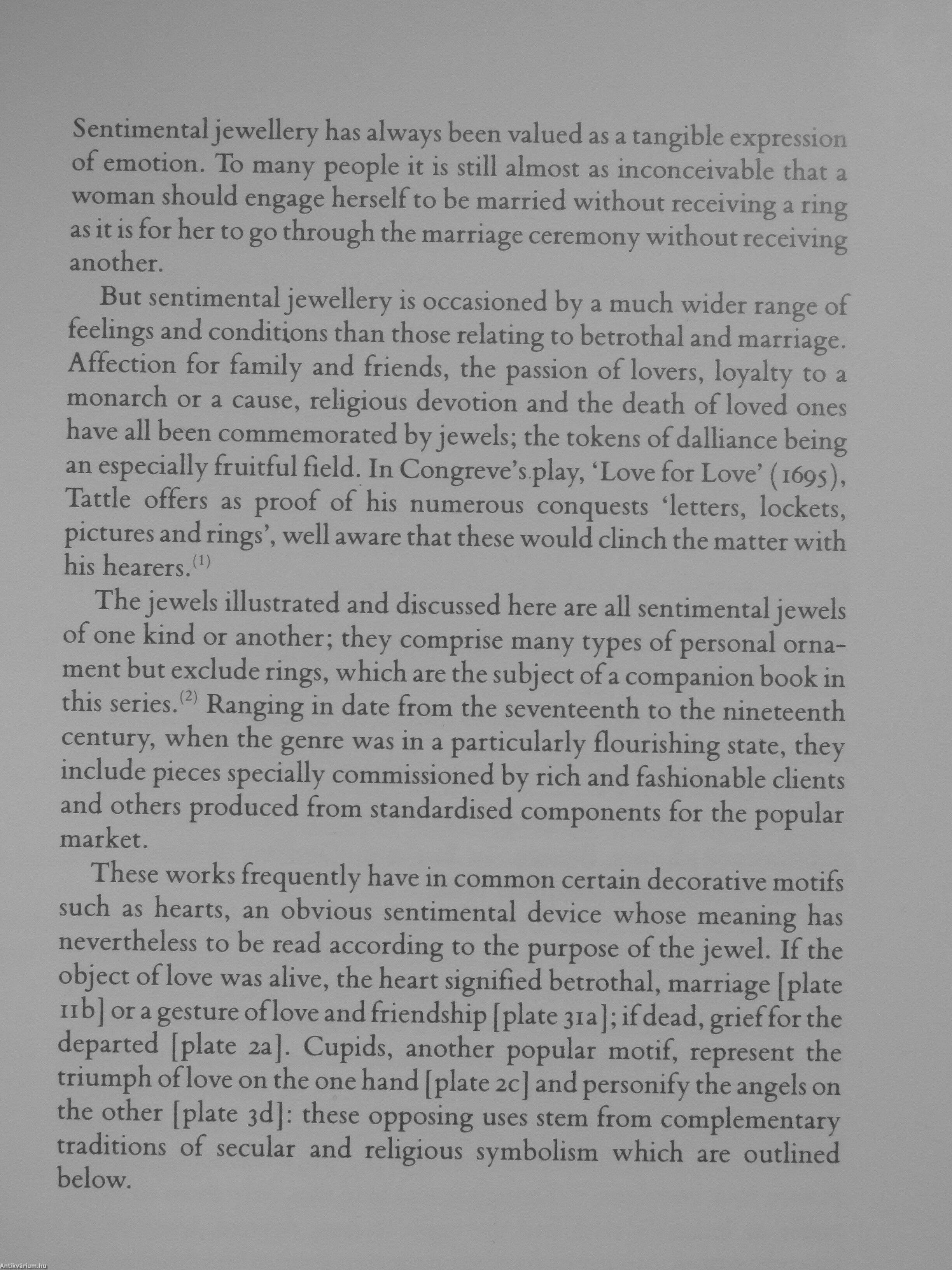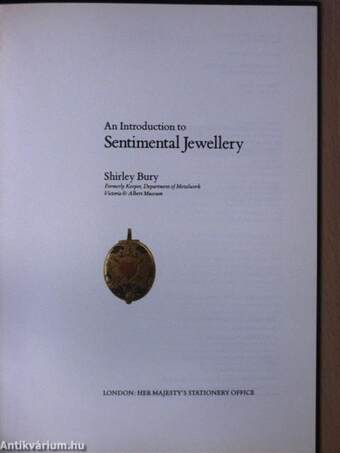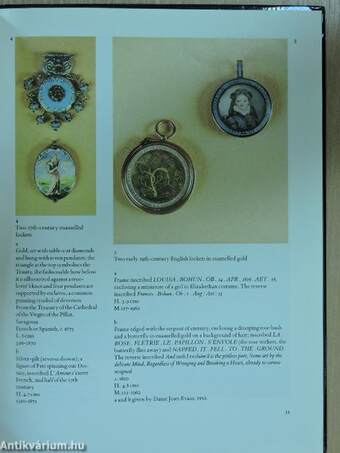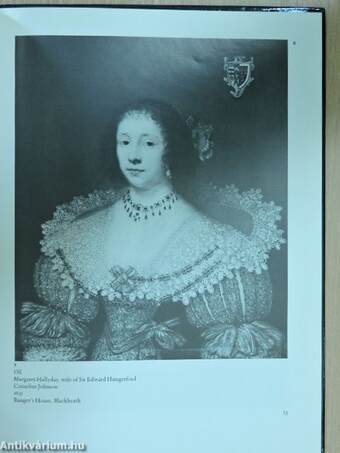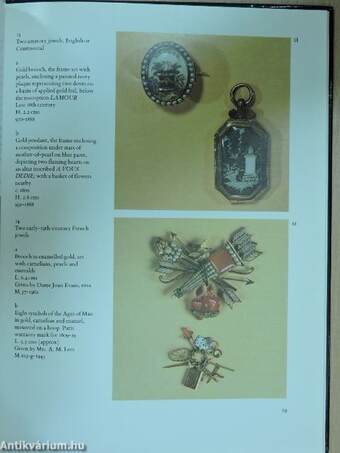1.066.456
kiadvánnyal nyújtjuk Magyarország legnagyobb antikvár könyv-kínálatát

VISSZA
A TETEJÉRE
JAVASLATOKÉszre-
vételek
An Introduction to Sentimental Jewellery
Victoria & Albert Museum
| Kiadó: | Her Majesty's Stationery Office |
|---|---|
| Kiadás helye: | London |
| Kiadás éve: | |
| Kötés típusa: | Fűzött kemény papírkötés |
| Oldalszám: | 47 oldal |
| Sorozatcím: | |
| Kötetszám: | |
| Nyelv: | Angol |
| Méret: | 25 cm x 19 cm |
| ISBN: | 0-11-290417-3 |
| Megjegyzés: | Színes fotókkal. |
naponta értesítjük a beérkező friss
kiadványokról
naponta értesítjük a beérkező friss
kiadványokról
Előszó
TovábbFülszöveg
An Introduction to
SENTIMENTAL JEWELLERY
Although marriage without a ring is almost
inconceivable, people no longer feel the need to
commemorate death with hair bracelets or
mourning lockets. But from the seventeenth
to the nineteenth centuries tokens of affection
or devotion created an enormous industry
committed to the service of sentiment.
The language of love and worship was
similarly translated into pictorial symbols -
lovers were likely to be consumed by flames
whilst the inviolate were represented as dia-
monds. Emblems, devices, and, with little or
no archaeological accuracy, heiroglyphs were
all called into the service of commemoration.
Shirley Bury, Keeper of the Department of
Metal work, presents this subject most vividly;
her text ranging from a detailed description of
the hair workers' industry to a portrayal of
Queen Victoria's elaborate mourning rituals.
We all need to be reminded of the symbolism
of stones and flowers - apple-blossom for... Tovább
Fülszöveg
An Introduction to
SENTIMENTAL JEWELLERY
Although marriage without a ring is almost
inconceivable, people no longer feel the need to
commemorate death with hair bracelets or
mourning lockets. But from the seventeenth
to the nineteenth centuries tokens of affection
or devotion created an enormous industry
committed to the service of sentiment.
The language of love and worship was
similarly translated into pictorial symbols -
lovers were likely to be consumed by flames
whilst the inviolate were represented as dia-
monds. Emblems, devices, and, with little or
no archaeological accuracy, heiroglyphs were
all called into the service of commemoration.
Shirley Bury, Keeper of the Department of
Metal work, presents this subject most vividly;
her text ranging from a detailed description of
the hair workers' industry to a portrayal of
Queen Victoria's elaborate mourning rituals.
We all need to be reminded of the symbolism
of stones and flowers - apple-blossom for
'preference', a pansy for 'think of me', a china
rose for everlasting beauty - and to consider
whether, as a result of reading this Intro-
duction, our own commemorative gestures are
not perhaps a little too stark. Vissza
Témakörök
Shirley Bury
Shirley Bury műveinek az Antikvarium.hu-n kapható vagy előjegyezhető listáját itt tekintheti meg: Shirley Bury könyvek, művekMegvásárolható példányok
Nincs megvásárolható példány
A könyv összes megrendelhető példánya elfogyott. Ha kívánja, előjegyezheti a könyvet, és amint a könyv egy újabb példánya elérhető lesz, értesítjük.



